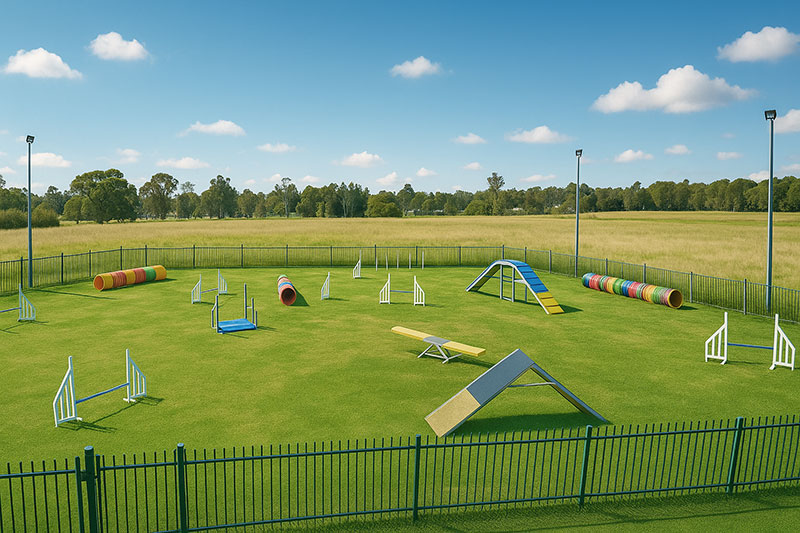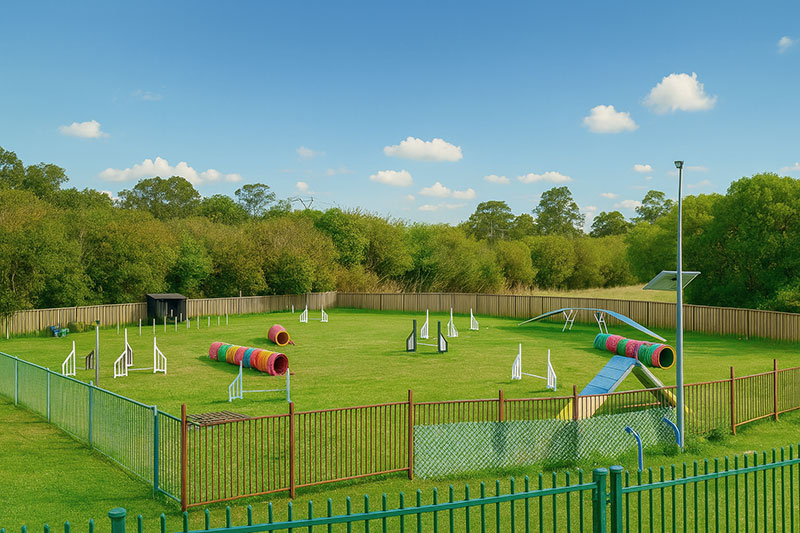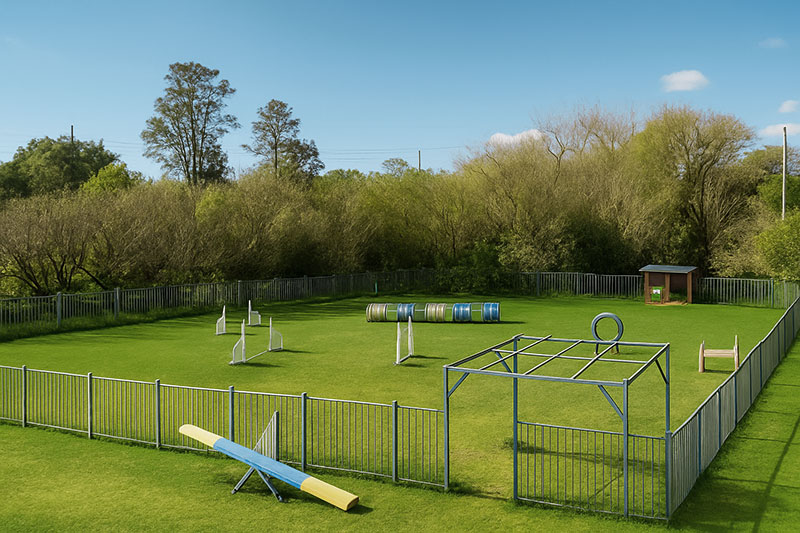How to get the most of your field hire
- First and foremost come with a detailed plan for each dog and with the intention to have fun together.
- If working on jump cues or obstacle performance, make sure you have an alternate and fun plan to allow your dog to have a mental break from the repetition that training behaviours create.
- Make sure the course set allows you to practice your behaviour cues with smooth lines. We are OK if you move some obstacles so long as you put them back before you leave.
- If you choose to run the set course, walk it thoroughly without your dog so that your plan is solid before you run. Investigate alternate handling options so that you can be sure the plan you have is the correct one for your skill level.
- Then really PLAN the cues you will give. What are they and when does your dog need to hear them? Go into the details.
- Try to assess the quality of the run as you go.
- Try not to repeat an error over and over again. Your dog will not choose to change things. Only you can do that.
- If the whole run was not great, break the course down into sections. Better to leave with 1-8 ran perfectly, than running a messy 1-20.
- The aim for any training session is to finish better than you started.
a. Part of that plan ought to be a warm up and cool down routine. Ensure to build this time into your session or prior to you arriving and before putting your dog back into the car.
a. Find the numbers
b. Walk the dogs line (literally)s
c. Work out your handling cues and walk that lines
b. Walk the dogs line (literally)s
c. Work out your handling cues and walk that lines
a. Were there areas that succeeded, but didn’t feel great?
b. Can you break them down and get them smoother?
c. Do you need to stop and spend time building value/commitment to a particular obstacle or skill?
d. Did your dog take an obstacle out of order? Stop and think about your body language and cues. Compare what they would look like if you actually wanted that obstacle.
b. Can you break them down and get them smoother?
c. Do you need to stop and spend time building value/commitment to a particular obstacle or skill?
d. Did your dog take an obstacle out of order? Stop and think about your body language and cues. Compare what they would look like if you actually wanted that obstacle.
a. Remember that your dog is a product of your training and handling.
b. Celebrate what goes well and make plans for what you need to work on next time.
b. Celebrate what goes well and make plans for what you need to work on next time.

Field 1 - Agility Course

Field 2 - Jumping Course

Field 3 - Skills Sequences